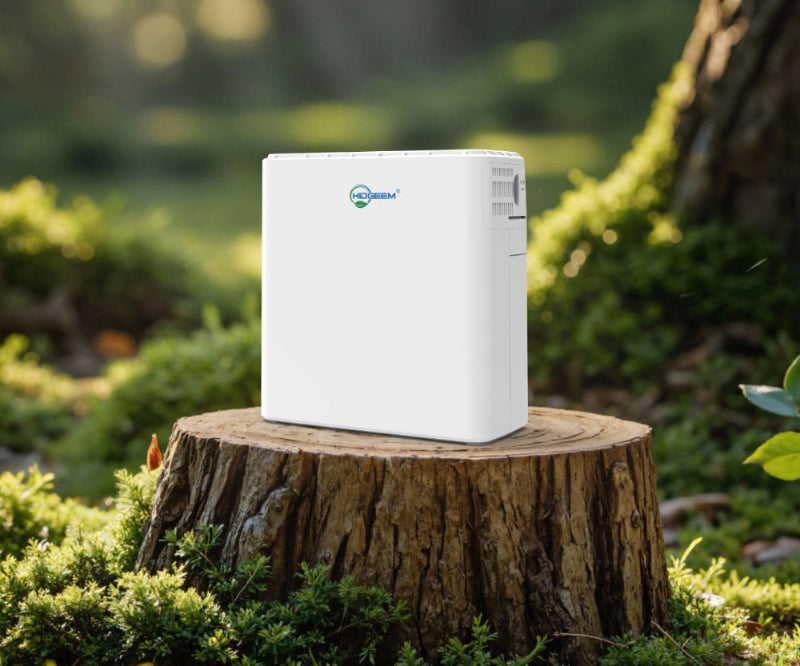
Oxygen Tank vs Portable Oxygen Concentrator: Which One Is Right for You?
If you or someone you love needs supplemental oxygen, you’ve probably compared an oxygen tank with a portable oxygen concentrator. I completely understand—this decision can feel overwhelming at first. In this blog, I’ll walk you through the differences in a clear and friendly way, so you can confidently choose the option that matches your lifestyle and oxygen needs.
What Is an Oxygen Tank?
An oxygen tank stores either compressed oxygen gas or liquid oxygen inside a metal cylinder. When the valve opens, oxygen flows out and goes directly to your cannula or mask. It’s simple, reliable, and widely used—but different types vary a LOT in weight, price, and how long they last.
Let’s break them down clearly.
Types of Oxygen Tanks (With Weight, Price & Usage Time)
1. Compressed Oxygen Cylinders (Gas Tanks)
This is the most common type, stored at high pressure inside steel or aluminum cylinders.
Below are typical sizes you’ll see in home and medical use:
| Cylinder Size | Approx. Weight | Approx. Capacity | Typical Duration* | Approx. Price |
|---|---|---|---|---|
| M9 (C Cylinder) | ~3–4 lbs | ~255 L | ~1–2 hrs at 2 L/min | $60–$120 |
| D Cylinder | ~5–6 lbs | ~400–500 L | ~2–3 hrs at 2 L/min | $100–$150 |
| E Cylinder | ~8–9 lbs | ~680 L | ~3–5 hrs at 2 L/min | $100–$200 |
| Large Steel Cylinder (125–250 cu ft) | 30–50 lbs | thousands of liters | many hours/days depending on flow | $300–$500+ |
*Times vary based on your oxygen flow rate.
➡ Who uses these?
People who spend most of their time at home, or who need backup oxygen in case of power outages.
2. Liquid Oxygen Tanks (LOX Systems)
Liquid oxygen is stored at extremely low temperatures, so the same tank holds MUCH more oxygen than gas cylinders.
-
Portable LOX Units:
-
Weight: ~4 lbs
-
Usage time: ~8–10 hours at setting 2
-
-
Large Home LOX Reservoirs:
-
Weight: ~120+ lbs
-
Can store ~31 L of liquid oxygen
-
Duration: Up to 8 days at 2 L/min
-
➡ Advantages: very long usage time, lighter portable units
➡ Disadvantages: evaporation loss, more complex, higher costs, fewer suppliers today
3. Small Portable Oxygen Bottles
These are mini oxygen tanks used for short travel or temporary outings.
-
Typically weigh 1–3 lbs
-
Last only 20–60 minutes depending on flow
-
Cost around $20–$50 each
➡ Mostly used for emergencies or quick trips—not for long-term oxygen therapy.
Pros and Cons of Oxygen Tanks
Advantages
-
Delivers very pure oxygen
-
Works without electricity
-
Good for emergency backup
-
Low initial equipment cost
Disadvantages
-
Heavy and inconvenient to carry
-
Must be refilled frequently
-
Limited use time—oxygen can run out anytime
-
Safety concerns with high pressure
-
Not ideal for travel or long daily use
What Is a Portable Oxygen Concentrator?
A portable oxygen concentrator (POC) takes air from around you, filters out nitrogen, and delivers oxygen continuously or in pulses. Since it creates oxygen instead of storing it, you don’t need tank refills.
Modern users love POCs—especially an oxygen concentrator with battery—because you can walk, travel, and live freely without worrying about running out of oxygen.
Types of Portable Oxygen Concentrators
1. Pulse-Flow Portable Oxygen Concentrators
Small, lightweight (2–5 lbs), great for active users.
2. Continuous-Flow Portable Oxygen Concentrators
Heavier (5–10 lbs), but essential if you need steady oxygen flow, especially during sleep.
Important Specs You Should Know
-
Flow Rate:
-
1–6 pulse settings
-
1–2 L/min continuous flow
-
-
Oxygen Purity: 90% ± 3%
-
Battery Life: 2–6 hours per battery
-
Weight: 2–10 lbs depending on model
-
Noise Level: 38–45 dB (similar to a quiet home)
Popular Portable Oxygen Concentrator Brands
-
Inogen (Rove 6, G5)
-
CAIRE (Freestyle Comfort, Eclipse 5)
-
Philips Respironics
-
OxyGo
-
GCE Zen-O
-
Hidgeem (SJ-OX1C) – a compact oxygen concentrator with battery popular for home and travel use
Pros & Cons of Portable Oxygen Concentrators
Advantages
-
Never run out of oxygen
-
Lightweight and designed for mobility
-
Perfect for travel (including airplanes)
-
Long battery life with swappable batteries
-
Great for long-term oxygen therapy
Disadvantages
-
Depend on electricity/battery
-
Upfront cost is higher
-
Continuous-flow POCs are heavier
-
Not suitable for patients needing very high oxygen flow
Who Should Choose an Oxygen Tank?
Choose an oxygen tank if:
-
You need very high flow rates (over 4 L/min)
-
You mostly stay at home
-
You want a reliable backup during power outages
-
You don’t move around much during the day
-
You don’t travel often
Who Should Choose a Portable Oxygen Concentrator?
Choose a portable oxygen concentrator (especially an oxygen concentrator with battery) if:
-
You want mobility and independence
-
You travel often
-
You need oxygen many hours a day
-
You don’t want to deal with refills
-
You prefer a lightweight, modern device
-
You want long-term, cost-efficient oxygen support
Most people say a POC lets them “get their life back.”
Final Comparison: Oxygen Tank vs Portable Oxygen Concentrator
| Feature | Oxygen Tank | Portable Oxygen Concentrator |
|---|---|---|
| Oxygen Source | Stored oxygen | Generates oxygen |
| Refills | Required | No refills |
| Weight | 3–50+ lbs | 2–10 lbs |
| Travel Friendly | Limited | Excellent |
| Cost Long-Term | Higher (refills) | Lower |
| Battery Needed | No | Yes |
| Suitable For | Home, high-flow use | Daily mobility & travel |
Final Thoughts
Both an oxygen tank and a portable oxygen concentrator have their place in oxygen therapy. But if freedom, mobility, and convenience matter to you, a portable oxygen concentrator with battery is usually the best long-term choice.
Share




